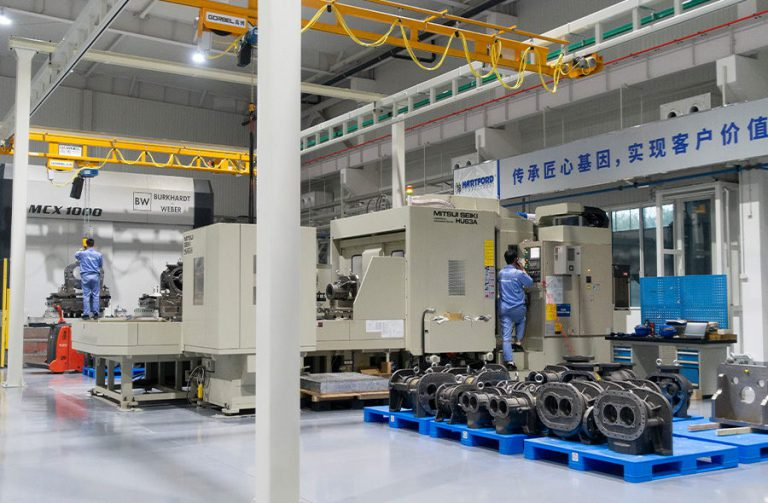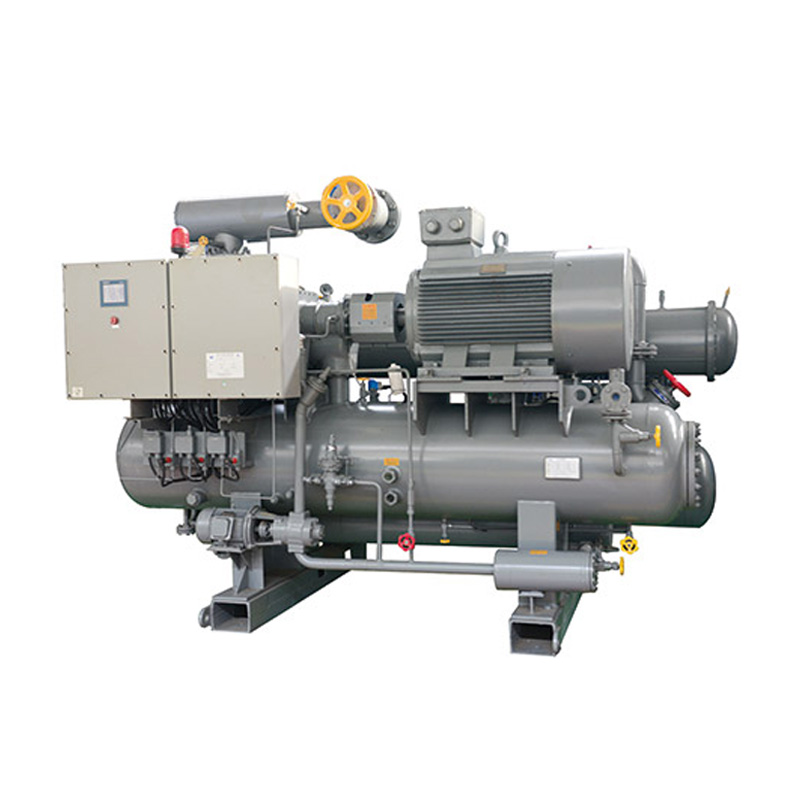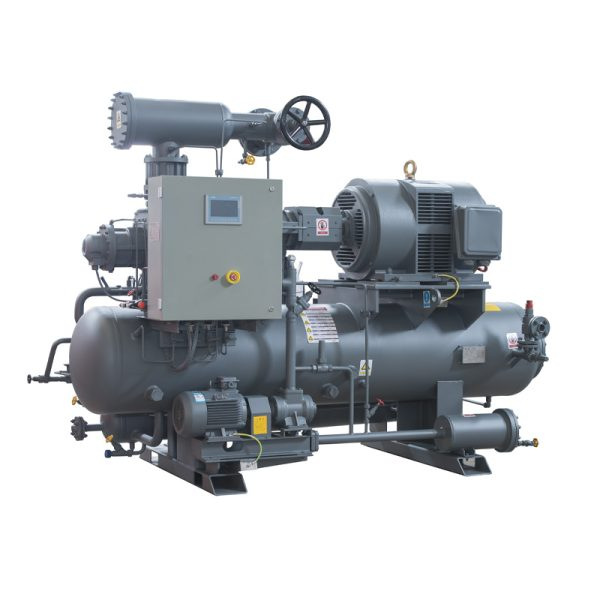Industrial refrigeration systems can save energy and work better by improving their four main parts: compressor, condenser, expansion device, and evaporator. For businesses aiming to cut costs and be eco-friendly, these changes are a smart move. With practical upgrades and real-world examples, industries like food processing or chemical plants can reduce power use while keeping systems reliable. MONTECH, a trusted name since 1956, offers tailored refrigeration solutions for industries like logistics, food, and chemicals. Their expert team delivers sustainable, high-performance systems with full support. Here’s how each component can be tweaked for better energy recovery, explained simply with real examples.

Compressor Operation and Improvement Potential
The compressor is the system’s heart, pushing refrigerant to create cooling. But it can guzzle energy if not set up right.
Better Efficiency, Less Power
A good compressor design saves electricity. The NJ Series Screw Compressor Condensing Unit, for example, uses special rotors to reduce leaks and friction. This cuts power use in both warm (Z series) and cold (D2 series) settings. In a fish processing plant, these units keep freezers cold without hiking the electric bill.

Matching Cooling to Demand
Compressors should only work as hard as needed. Variable frequency drives (VFDs) slow them down when cooling demand drops, like in a quiet warehouse at night. This avoids wasting energy, keeping costs low.
NJ Series Screw Compressor Features
The NJ Series has a dry economizer for cold environments. It cools refrigerant extra before it expands, boosting efficiency. In a meat packing facility, this setup freezes products faster while using less power.
Condenser Role in Heat Release
The condenser dumps heat from the refrigerant to the air or water outside, affecting how hard the compressor works.
Handling Heat in Different Climates
Hot weather makes condensers less efficient, raising energy use. A well-sized condenser with smart fan controls keeps things steady. At Brunei’s Mora Port, evaporative condensers handle humid heat, cooling a 50-ton/day ice plant reliably.
Size and Material Choices
Bigger condensers release heat better but need space. Copper tubes with aluminum fins work well because they transfer heat fast. In coastal plants, tough materials fight rust, lasting longer.
Screw Refrigeration Compressor Unit in Action
Screw Refrigeration Compressor Units often use evaporative condensers, which spray water and blow air to shed heat efficiently. In the Guangzhou Port Nansha project, with 227,000 tons of cold storage, these condensers save energy while cooling huge spaces.

Expansion Device Performance
The expansion device controls refrigerant flow into the evaporator, lowering pressure for cooling.
Controlling Flow and Pressure
Thermostatic expansion valves (TXVs) adjust refrigerant flow to match cooling needs. In a quick-freezing room for frozen pizzas, they ensure steady cooling without wasting energy.
Boosting Evaporator Work
A bad valve can mess up the evaporator, causing uneven cooling. In a dairy storage unit, a well-calibrated valve keeps milk at a steady temperature, protecting quality.
Picking the Right Valve
Valves must match the system’s size and refrigerant, like CO2 in the Shandong Haidu project. There, 104,000 tons of seafood storage rely on precise valves to handle CO2 at -25°C, keeping freezers efficient.
Evaporator Role in Heat Absorption
The evaporator pulls heat from products or spaces, letting refrigerant absorb it as it turns to gas.
Better Heat Transfer
The evaporator’s fins and tubes decide how fast it cools. In a freeze-dried coffee plant, smart designs ensure quick, even cooling to lock in flavor.
Keeping Airflow Even
Good airflow prevents frost or warm spots. In Wuhan’s 206,000-ton frozen warehouse, ceiling air coolers spread cold air evenly, keeping food fresh across huge spaces.
Great for Cold Tasks
The NH3/CO2 cascade system excels at super-low temperatures, from -52°C to 0°C. In Ecuador’s Promarosa shrimp facility, it keeps 650 tons of storage icy, using less energy than older systems. CO2 also works well for beer or snack production, where exact cooling matters.
Additional Components Supporting the Cycle
Other components help the system run smoothly and save energy.
Oil Separators and Lubrication
Oil separators stop lubricant from clogging the evaporator or condenser. In Malaysia’s cold storage, they keep the ammonia system efficient, protecting gear and saving power.
Economizers for Extra Cooling
Dry economizers add cooling power without more electricity. In a chemical plant cooling reactors at -30°C, the NJ Series’ economizer saves energy while keeping things steady.
VFDs for Smart Adjustments
VFDs tweak motor speeds to match needs. In Thailand’s ASRS cold storage, they cut power use by slowing fans during low-demand times, perfect for busy logistics hubs.
Optimization Strategies for Energy Recovery
Refrigeration systems can grab wasted heat and use it, cutting energy losses.
Reusing Heat from Condensers
Condenser heat can warm water for cleaning or heat offices. In Wuhan’s project, heat from the NH3/CO2 system warms nearby spaces, saving fuel.
Heat Recovery Systems
Loops can capture heat from compressors to preheat liquids. In a chemical plant, this cuts the need for extra heaters, lowering costs.
Smart Monitoring
Digital controls track temperatures and adjust settings in real time. In Guangzhou Port, they optimize 24 compressors, saving energy by tweaking fans on cooler nights.
Technical Advantages of MOON-TECH
MOON-TECH’s units are built for tough jobs like logistics or chemical cooling.
Efficient NJ Series Compressors
These units use compact designs and high-efficiency tubes, delivering strong cooling with less power. At Shandong Haidu, they cool 104,000 tons of seafood storage efficiently.
Modular Design for Easy Fixes
Modular setups let workers fix one part without stopping everything. In Brunei’s ice plant, this keeps production going during repairs.
Proven Refrigeration Skills
MOON-TECH’s solução, like Promarosa’s shrimp storage, shows their skill with NH3/CO2 systems, making them a top choice for complex cooling needs.
FAQ
Q1: How does a screw compressor improve refrigeration efficiency?
A: It reduces internal leakage losses while maintaining consistent compression ratios across varying loads through advanced rotor profiles.
Q2: What role does an economizer play in a screw condensing unit?
A: It recovers intermediate pressure vapor to increase cooling capacity without extra energy input—improving overall cycle efficiency significantly.
Q3: Why choose CO₂-based systems for low-temperature applications?
A: CO₂ is especially suitable for low temperature refrigeration systems such as individual freezer due to its high volumetric cooling capacity at very low evaporation temperatures (-50°C).
Q4: Can waste heat from condensers be reused effectively?
A: Yes; recovered heat can be redirected toward preheating water or other fluids used elsewhere within your facility’s processes—enhancing total system ROI.

